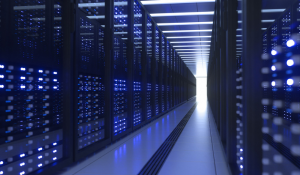Protecting Your Business: The Power of Next-Generation Firewalls
Welcome to a deep dive into the world of cybersecurity and network defence. In an era where the digital landscape is as dynamic as it is...

Securing corporate networks against increasingly complex cyber threats is a core task for IT specialists, particularly in security-critical sectors such as healthcare and manufacturing. Effective network segmentation and security require a robust control mechanism at the transition point between internal systems and external networks. For many critical organizations, the hardware firewall forms the indispensable foundation of this perimeter defense.
A firewall acts as a strict access barrier that analyzes all data traffic, allowing only authorized traffic to pass based on established security policies. The choice of the correct implementation—whether it is a physical appliance or a software-based solution—has a direct impact on the performance, scalability, and resilience of the entire security architecture. We will shed light on the specific features, advantages, and application scenarios that make the hardware firewall the preferred choice for high-security environments.
Firewalls are the digital gatekeepers of a network. Their main task is to monitor the data traffic between two or more networks, typically the internal LAN and the internet, and filter it according to predefined rules. They decide which data packets are allowed to pass (Allow) and which are blocked (Deny).
A firewall solution can be implemented either as a hardware firewall or a software firewall. The hardware variant is a dedicated, standalone device physically installed at the transition point between the networks. In contrast, a software firewall is an application that runs on a general operating system, such as a server or an endpoint device. Both pursue the goal of forming a protective barrier, but they differ fundamentally in their deployment location, performance, and management capabilities.
The hardware firewall is, due to its design and placement, predestined for protecting entire corporate networks. It offers a robust and central line of defense, often representing the preferred solution for companies with high security requirements. Thanks to its dedicated architecture, it can handle complex security tasks with minimal performance overhead.
Here are seven essential advantages that a hardware firewall offers compared to a purely software solution:
Central Network Protection: The appliance centrally protects the entire network at the perimeter before traffic reaches the internal systems.
Independence from the Host Operating System: Since it runs on its own specialized hardware, it cannot be easily disabled or circumvented by a host operating system compromise.
High Performance and Throughput: Specially designed processors and network interfaces (ASICs) enable significantly higher speeds for packet inspection, which is indispensable for high-performance networks.
Scalability and Redundancy: Professional hardware firewalls can be operated in High Availability (HA) clusters to ensure failover capability and easy capacity expansion.
Simplified Administration: Security policies for the entire network are managed at a single point, reducing administrative effort compared to managing many individual software firewalls.
Advanced Security Features: It often provides integrated additional services such as VPN gateways, Intrusion Prevention Systems (IPS), or anti-virus scanning for network traffic.
Physical Separation: The physical distance from the protected network segment creates an additional, more difficult-to-breach barrier.
In contrast to the hardware firewall, the software firewall provides protection located directly on the endpoint device or the workload itself. This allows for very granular control and is particularly important for mobile or distributed environments. Its flexibility makes it an excellent addition to the security concept.
Software firewalls typically incur lower acquisition costs and can be quickly installed on new devices. They are excellent for providing individual device protection by controlling the inbound and outbound traffic of specific applications. A decisive advantage lies in their protection, which is effective even when a device is outside the secure corporate network, such as when working from home or on business trips.
The fundamental difference lies in placement and the level of protection. The hardware firewall serves as the primary, central barrier at the network entrance and protects the entire segment from external threats. The software firewall, on the other hand, provides segmented, local protection for the individual endpoint device.
|
Feature |
Hardware Firewall |
Software Firewall |
|
Scope of Protection |
Entire network (Perimeter) |
Single device (Host) |
|
Performance |
Very high (dedicated hardware) |
Dependent on the host system |
|
Cost |
Higher initial purchase costs |
Lower/no purchase costs (often integrated) |
|
Management |
Centralized and uniform |
Decentralized (management effort increases with devices) |
|
Attack Target |
Can be directly attacked externally |
Rarely a direct target; can be bypassed if OS is compromised |
|
Application Scenario |
Central network separation and high-performance gateway |
Individual endpoint and application protection |
Especially in regulated and critical infrastructures (CRITIS) such as healthcare or manufacturing, where the availability and integrity of data and systems are paramount, the hardware firewall is indispensable. It meets the high demands for network security, as often required by industry-specific security standards.
In hospitals and manufacturing plants, the hardware firewall is used for the logical separation of IT networks (administration, office) and OT networks (medical technology, production facilities). This prevents an attack on a less sensitive network segment from spreading to critical systems. The software firewall perfectly complements this by protecting mobile devices used by doctors or maintenance technicians when they are outside the secure LAN.
A modern and fail-safe security concept generally relies on a hybrid strategy. The combination of a high-performance hardware firewall as the first line of defense at the perimeter with software firewalls on endpoint devices (desktops, laptops, servers) forms a multi-layered and deep-layered defense (Defense in Depth).
This approach ensures that even if an attack manages to overcome the hardware firewall (e.g., through a compromised endpoint), the software firewall on the host represents a further control instance. This synergy enables continuous and granular security control – from the network edge to the individual workload.
The requirements for data packet inspection are constantly increasing as attackers become more sophisticated. A Next Generation Firewall (NGFW) builds on the basic functions of the traditional hardware firewall by going beyond the simple filtering of ports and protocols.
NGFWs integrate advanced security features such as Deep Packet Inspection (DPI) and an Intrusion Prevention System (IPS). They can identify the actual content of the transmitted data and the application being used, regardless of the port or protocol. This offers much more granular and effective protection against modern, application-based attacks. The implementation of an NGFW is often the next logical step for organizations looking to modernize their hardware firewall architecture.
In many organizations, especially in education or companies with strict compliance requirements, control over accessed web content is essential. The function of content filtering and firewall is responsible for preventing access to malicious, inappropriate, or non-business-relevant websites.
Content filter functionalities are now a standard component of many modern hardware firewall solutions (often referred to as UTM – Unified Threat Management – or NGFW). They operate at the application layer (Layer 7 of the OSI model) and use databases with millions of categorized URLs to check and block web traffic in real-time. This ensures not only greater security but also compliance with internal policies.
IT security is strongly evolving toward hybrid and cloud-based architectures. The trend is to place the firewall functions where the workload to be protected is running. This is leading to an increase in virtual firewalls (software) in cloud and virtualization environments.
Nevertheless, the hardware firewall in the data center and at the corporate perimeter of CRITIS organizations remains the gold standard for high performance, central enforcement of security policies, and physical resilience. It is evolving into the powerful Next Generation Firewall (NGFW), which forms the foundation for a secure network architecture, while flexible, software-based solutions complement it in the cloud and at the endpoints.
Regardless of the choice, it is crucial to regularly review security strategies and update the firewall in line with the latest threats and technologies. Both types of firewall play an essential role in protecting against cyber attacks and help to maintain the integrity and confidentiality of company data.

Welcome to a deep dive into the world of cybersecurity and network defence. In an era where the digital landscape is as dynamic as it is...

One of the most effective measures for increasing network security is the use of firewalls. While traditional firewalls offer basic protection, more...

One of the key technologies that helps to protect networks from unauthorized access and potential attacks is stateful inspection. But what exactly is...